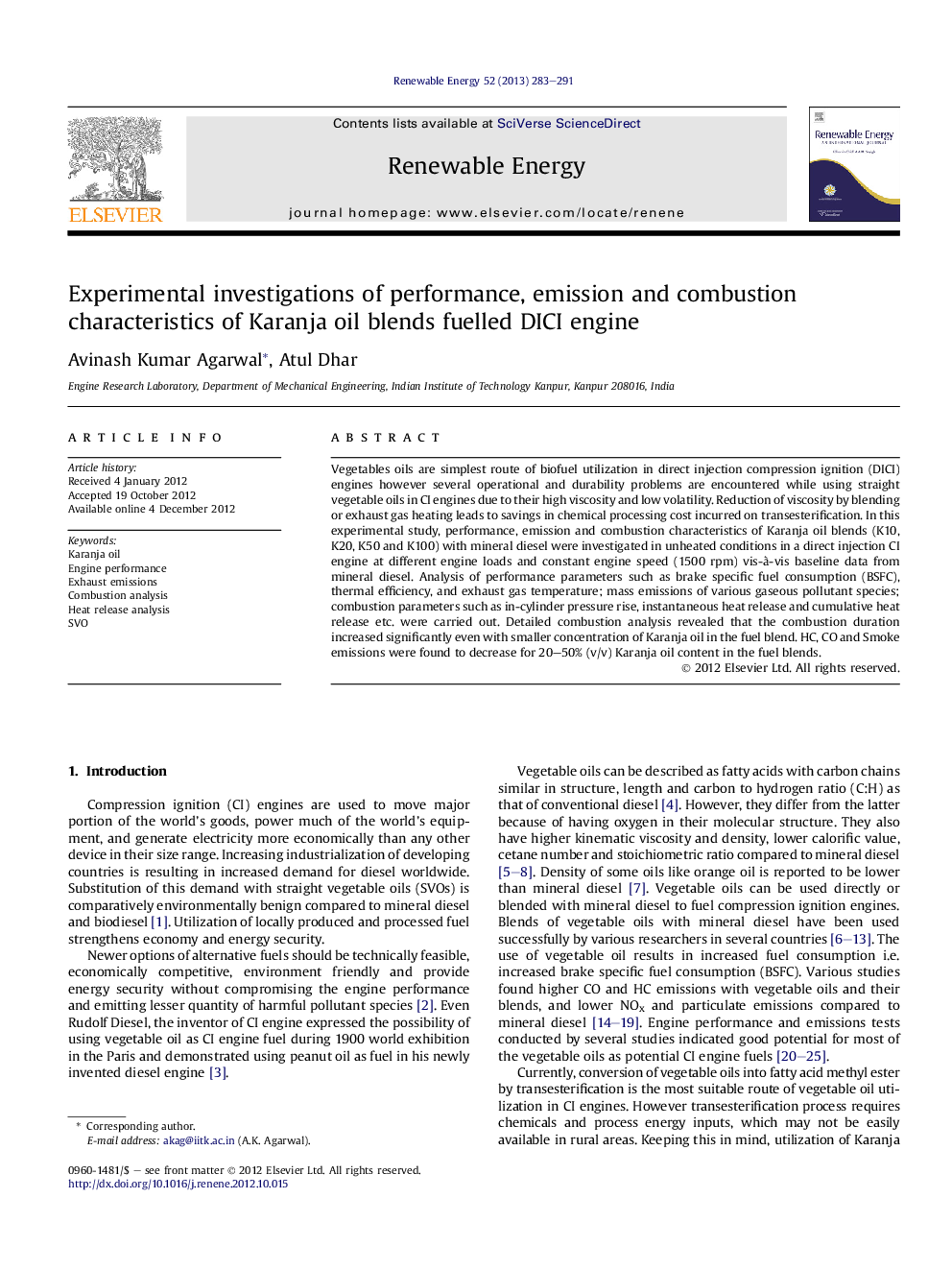| کد مقاله | کد نشریه | سال انتشار | مقاله انگلیسی | نسخه تمام متن |
|---|---|---|---|---|
| 300729 | 512488 | 2013 | 9 صفحه PDF | دانلود رایگان |

Vegetables oils are simplest route of biofuel utilization in direct injection compression ignition (DICI) engines however several operational and durability problems are encountered while using straight vegetable oils in CI engines due to their high viscosity and low volatility. Reduction of viscosity by blending or exhaust gas heating leads to savings in chemical processing cost incurred on transesterification. In this experimental study, performance, emission and combustion characteristics of Karanja oil blends (K10, K20, K50 and K100) with mineral diesel were investigated in unheated conditions in a direct injection CI engine at different engine loads and constant engine speed (1500 rpm) vis-à-vis baseline data from mineral diesel. Analysis of performance parameters such as brake specific fuel consumption (BSFC), thermal efficiency, and exhaust gas temperature; mass emissions of various gaseous pollutant species; combustion parameters such as in-cylinder pressure rise, instantaneous heat release and cumulative heat release etc. were carried out. Detailed combustion analysis revealed that the combustion duration increased significantly even with smaller concentration of Karanja oil in the fuel blend. HC, CO and Smoke emissions were found to decrease for 20–50% (v/v) Karanja oil content in the fuel blends.
► Finding the feasibility of using minor blends of Karanja oil with diesel in CI engine for decentralized power generation.
► Performance, emission and combustion characteristics of different Karanja oil blends.
► Results show that lower blends (upto 20% v/v) can be readily used as diesel substitute.
► Utilization of higher blends requires modification in the engine hardware.
Journal: Renewable Energy - Volume 52, April 2013, Pages 283–291